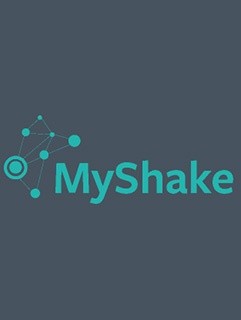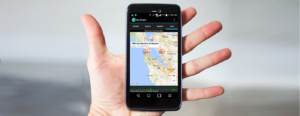Predicting the next ‘Big One’: SCET earthquake researchers find business model when most would rather not know

Here at the Sutardja Center for Entrepreneurship & Technology, innovators from a variety of fields utilize the Center’s resources to further their pursuits. MyShake is a prime example of an academic pursuit turned startup venture that took advantage of the opportunities we offer. Learn more about how you can commercialize your research at the Sutardja Center’s Management of Technology Innovation (MTI).
Bay Area residents are no strangers to earthquakes. In fact, with historic quakes like the 1989 Loma Prieta earthquake and the 2014 Napa earthquake in the not too distant past, earthquake early warning systems are practical and precautionary steps that would enormously benefit residents and businesses in the bay and beyond. That is why Berkeley Seismology Ph.D candidate Qingkai Kong and his advisor, Richard Allen, decided to turn their groundbreaking research into an entrepreneurial pursuit. With the help of the Sutardja Center’s Management of Technology Innovation (MTI) course as well as the National Science Foundation’s (NSF) I-Corps program, Kong and Allen were able to learn not only how to go about starting a company, but also how to create a product consumers will actually use.
Their app, MyShake, was born out of Kong’s Ph.D. research in which he developed an artificial neural network enabling sensors in cell phones to distinguish between human movement and earthquakes. Therefore, when an earthquake strikes, a cell phone in the epicenter will detect it and enable the network to send messages to other phones miles away, resulting in people knowing an earthquake will strike seconds or even minutes before it reaches them.
And while a couple seconds may not seem like a lot of time, it in fact could have major safety implications. Take the example of the Loma Prieta earthquake. According to Allen, over 50% of the injuries were due to falling objects, therefore, if people were given a couple seconds notice to take cover before the quake hit, many of those injuries could have been avoided.

Due to its huge potential impact, Kong and Allen decided to go forward with the MyShake project and released a prototype system in February 2016, amassing over 270,000 global users since. Kong and Allen knew they were on to something big, and in order to better familiarize themselves with the startup world and to figure out how to take MyShake to the next level, they decided to enroll in the Sutardja Center’s MTI course this past Spring semester. Through the MTI course, Kong and Allen were put in touch with the I-Corps program. The guidance the MyShake team received from these two programs led them to two important pivots in their product:
First, Kong and Allen realized during their MTI course that people are not willing to pay for apps, so their idea of a monthly subscription fee was out the window. Second, and more importantly, the MyShake duo discovered during their training with I-Corps that people actually do not want to know when the next earthquake will strike.
“We can sit here and say, ‘That absolutely everyone cares about earthquakes, they have to right?’” Allen said. “And of course, it turns out that they really don’t, and they don’t even want to be reminded about earthquakes.”
So, in order to make their product viable, Kong and Allen had to reevaluate if there were even consumers in the market for their product. And it turns out there were: insurance companies. By having access to the data that the MyShake app is collecting, Kong said, insurance companies are able to better structure their risk models for the future so that they can better estimate the financial losses earthquakes could cause.
“What we realized is that we need to do more because of these pivots to develop and demonstrate how this data can be used,” Allen said. “So our plan is to do that development and to stay engaged with these groups who we think are interested in using the data.”
